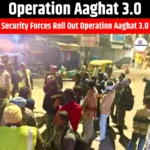Terrorist Designation of The Resistance Front
|
General Studies Paper III: Challenges to Internal Security Through Communication Networks, Government Policies & Interventions |
Why in News?
Recently The Resistance Front was officially listed as a terrorist group by the U.S. State Department. The designation marks TRF as a proxy for Lashkar‑e‑Taiba. The move highlights global efforts to address terrorism threats.
Key Points: Terrorist Designation of The Resistance Front
- On July 17, 2025, the U.S. The Department of State formally designated The Resistance Front (TRF) as a Foreign Terrorist Organization (FTO) and simultaneously labeled it a Specially Designated Global Terrorist (SDGT).
- The U.S. statement clearly describes TRF as a front and proxy for Lashkar‑e‑Taiba. This conclusion was based on overlapping leadership, shared tactics, and common operational patterns.
- U.S. officials noted TRF publicly claimed responsibility for a series of violent attacks including the April 22, 2025 attack on tourists near Pahalgam.
- This comprehensive approach is aimed at disrupting terrorist networks, and reinforcing global norms against extremist violence.
Who is The Resistance Front (TRF)?
- About: The Resistance Front is widely known as a proxy militant outfit operating in Jammu and Kashmir. The group became active in the region around 2019. It projects itself as a resistance movement fighting for Kashmir’s freedom. Global and Indian intelligence agencies have identified it as a front for a Pakistan-based terrorist organization.
- Origin: TRF first came into public attention in October 2019, shortly after India revoked Article 370, which had granted special status to Jammu and Kashmir. It appeared at a time when Pakistan was facing intense international scrutiny for supporting cross-border terrorism. In response to global pressure, groups like Lashkar-e-Taiba sought to rebrand themselves under different names.
- Region: TRF’s primary base of operations lies within the boundaries of Jammu and Kashmir. Most of its attacks are centered in southern Kashmir, especially in districts like Pulwama, Anantnag, Kulgam, and Shopian.
- Function: TRF operates in a more secretive manner. Its leadership remains hidden, and most communications are released via encrypted platforms.
-
-
- Muhammad Abbas Sheikh and Sheikh Sajjad Gul are the founders of this militant group.
- The group is led by Sheikh Sajjad Gul, who currently holds the position of Supreme Commander.
- TRF’s structure is built on decentralized cells that function independently in regions like Pulwama, Shopian, Baramulla, and Anantnag.
- Recruits are typically radicalized through social media, and many are trained locally or in Pakistan-occupied Kashmir.
- The group avoids large gatherings and instead encourages lone-wolf-style attacks and surprise ambushes on security forces.
-
- Weapons: AK-Series, Light Machine Guns (LMGs), Grenades, Improvised Explosive Devices (IEDs), Sticky Bombs and Magnetic Bombs are commonly used by them.
- Affiliation: TRF has strong operational and ideological ties with Lashkar-e-Taiba (LeT), which is already a designated terrorist organization under UN and U.S. lists. The group uses TRF as a cover name to escape global sanctions and attention.
-
- Some activities and statements issued by TRF follow the language and strategy once used by Hizbul Mujahideen.
- Some other elements from banned groups like Jaish-e-Mohammed also provide indirect support.
- According to the Indian intelligence agencies, the Inter-Services Intelligence (ISI) in Pakistan is a major backer of TRF.
Major Attacks and Activities Linked to TRF
- Pahalgam Massacre: One of the deadliest attacks linked to TRF occurred on April 22, 2025, in the Baisaran Valley near Pahalgam in the Anantnag district. Armed militants opened fire on a group of unarmed civilians during a peaceful gathering. The assault resulted in the deaths of 26 individuals. The initial claim of responsibility was posted by TRF through an encrypted messaging channel, but the group later attempted to deny involvement.
- Ganderbal Civilian Killings: Another incident took place on October 20, 2024, in Ganderbal district of central Kashmir. In this targeted attack, seven civilians lost their lives. TRF issued a statement justifying the killings by labeling the victims as collaborators, a term frequently misused by such groups.
- Reasi Bus Firing: On June 9, 2024, a group of pilgrims returning from the Shiv Khori shrine in Reasi district came under fire from TRF militants. The pilgrims were traveling in a private bus when gunmen ambushed the vehicle in the Ransu area. The sudden attack killed nine civilians and left at least 43 others injured. TRF claimed the attack shortly after through an anonymous online post.
- Lal Chowk Srinagar Attack: Another attack occurred on February 2, 2020, in Lal Chowk, Srinagar. Militants opened fire near a crowded market area, killing four civilians on the spot. Two Central Reserve Police Force (CRPF) personnel also died in the attack. This strike marked TRF’s transition from digital propaganda to physical attacks.
India’s Stand and Counter‑Measures Against TRF
- Formal Ban under UAPA: India officially added TRF to its list of banned organizations under the Unlawful Activities (Prevention) Act early in 2023. Alongside the outfit’s designation, Sheikh Sajjad Gul has also been officially recognized as a terrorist. The act empowered authorities to freeze assets, arrest members, and shut digital channels supporting the group.
- Military Response: Following the April 2025 Pahalgam incident, the National Investigation Agency arrested individuals who supported the attack. After this incident, India initiated Operation Sindoor on May 7, 2025. The mission involved targeted strikes on nine terror camps in Pakistan-occupied Kashmir. The government reports suggest over 100 militants were neutralised.
- Global Diplomatic Push: India began a diplomatic push in May 2025 to build international consensus for the formal recognition of TRF as a terrorist entity. A high-level delegation engaged with the UN Office on Counter‑Terrorism and the 1267 Sanctions Committee at the UN. The campaign highlighted TRF’s direct links to Lashkar-e-Taiba and its role in cross-border militant activity.
-
- India welcomed the July 18, 2025, decision by the U.S. Department of State to label TRF a Terrorist Designation. The government praised the move as powerful proof of India–U.S. counter-terror cooperation.
Impact of Terrorist Designation on TRF
- Financial Disruption: The U.S. designation triggers automatic asset freezes under American jurisdiction. TRF can no longer hold funds in U.S.-linked banks or financial systems. Financial channels used for money transfers from Pakistan or Gulf states are now under stricter scrutiny. Any entity in the U.S. found dealing with TRF faces heavy legal penalties.
- Network Breakdown: Labeling TRF as a terrorist group forces banks and service providers worldwide to sever ties. Travel and communication channels that its members used are now shut. This slows coordination between cadres in Pakistan and operatives in Kashmir. Digital platforms also risk sanction if they host their propaganda. These barriers greatly complicate recruitment and messaging efforts.
- Regional Security: The terrorist label enhances regional security cooperation in South Asia. India gains stronger justification for military moves across the Line of Control. Central Asian and South Asian states now view TRF more clearly as a terrorist network. This evolves regional counter-terror frameworks. The move strengthens multilateral efforts targeting terrorist financing, especially under FATF guidelines.
|
Lashkar‑e‑Taiba (LeT)
|









